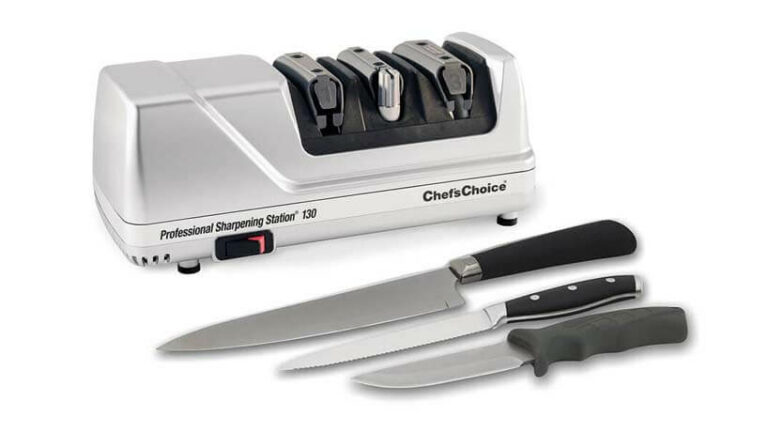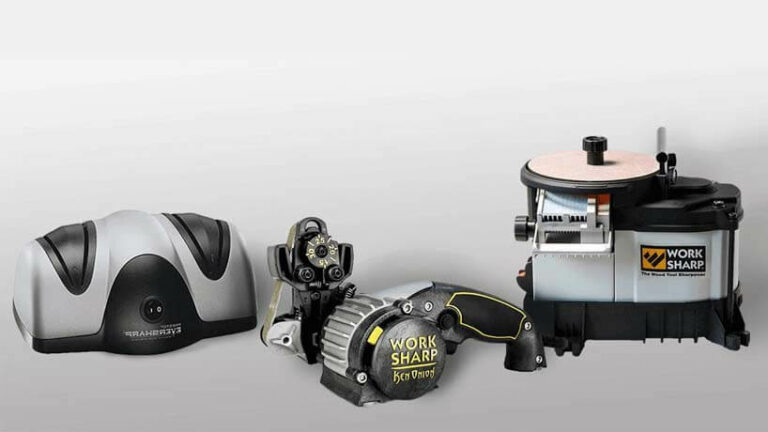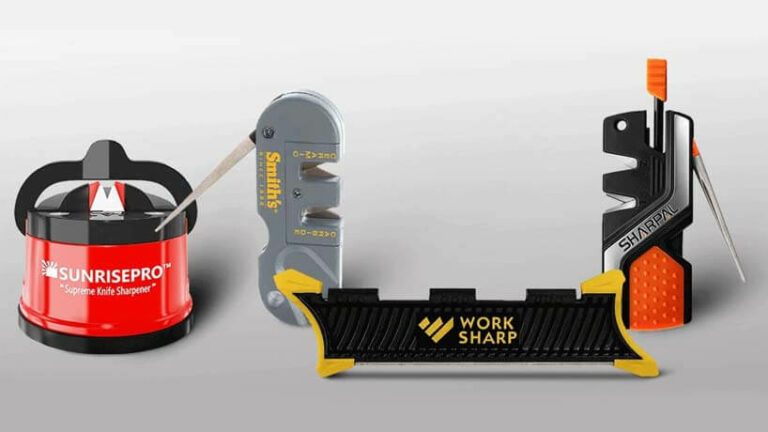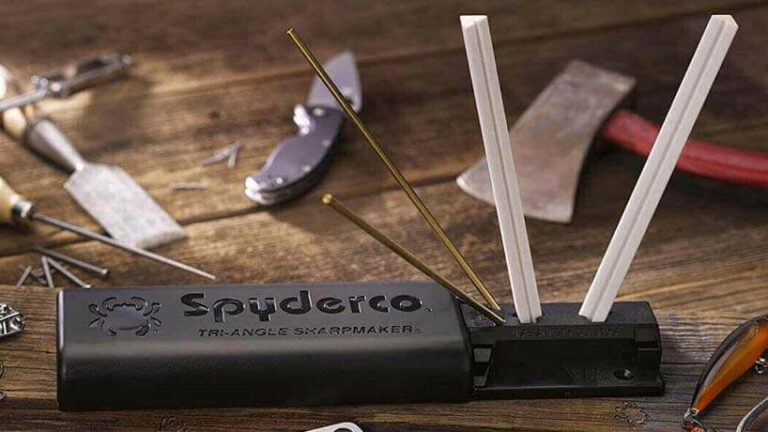A sharpening stone is a traditional way to sharpen your knives. Here’s all the information that you need to get yourself ready in using one. There is nothing like knowing how to use a sharpening stone when it comes to a traditional skill. People have been honing the edge of their knives with stones for centuries. Even now with modern advances, there’s nothing like using a sharpening stone to feel macho and hands-on.
It also helps that doing it this way is a lot more exciting than just letting an automatic sharpener do all the work. Whether it is knowing how to sharpen a kitchen knife with a stone or how to sharpen a pocket knife with a stone, using a sharpening stone is very flexible. Here we present the basic information that you need to start sharpening your own knife with a stone.
Some Background
Before you learn how to sharpen a knife with a stone, you have to understand how they work. Knives are a favorite tool in a variety of situations. They can cut and slice depending on the need. However, being useful means they go through a lot of wear-and-tear, especially the cutting edge. The result is that this edge gets blunted. This is where sharpening comes in.
Sharpening basically the removal of the blunted material by grinding against a much coarser and tougher material. Sharpening stones are the oldest method by which this is done, but there are others out there. This includes automatic sharpeners to honing rods. The great thing about sharpening stones is that they are pretty much the simplest to use. With a few simple steps, you can start learning how to sharpen a knife with a stone.
Buying the Right Stone
The next step before learning how to sharpen a pocket knife with a sharpening stone or how to sharpen a kitchen knife with a wet stone is to actually buy the stone itself. There are actually three main stone types you can choose from. Oil stones are the traditional Western sharpening stone. Naturally occurring as Novaculite, modern scientists have synthesized aluminum oxide and silicon carbide.
The main reason for calling them oil stones is that they use oil for help in doing the job of sharpening. Depending on the material, there are different levels of sharpening. Novaculite oil stones are mainly taken from Arkansas. This is the reason why they are often called Arkansas stones. Arkansas stones are divided into different grades depending on how coarse they are and how good their finish is on a blade.
The most popular grades are of the finer quality and can produce a very polished edge for a blade. Aluminum oxide stones are synthesized and are very coarse. This is what you would want to use if you want to sharpen in a hurry. With their distinct brown or orange color, aluminum oxide oil stones are very distinctive. Unlike natural stones, these have definite grades like fine, medium, and coarse to make buying easy.
However, the most effective oil stones are those made from silicon carbide. Usually colored gray, these stones make quick work of any sharpening that needs to be done. Water stones are pretty new to those in the West, however, they have quickly become very popular. This is mostly thanks to their use of water instead of oil. Most of the natural water stones originate from Japan.
Japanese water stones are pretty expensive though. Fortunately, synthetic aluminum oxide water stones are available. Similar to the oil stone version, their main difference is that they are actually softer. A softer stone is pretty good because it allows for the old abrasive surface to wear away easily. This reveals a sharper and fresher surface for better sharpening. Diamonds are more than just a girl’s best friend.
They can also be a great way to sharpen your knife. Diamond “stones” are actually metal plates with small industrial diamonds on top. Harder than any material in the world, they are perfect for scraping away old metallic edges and revealing the material underneath. There are two types of diamond stones that you can choose from. One has holes on the top to catch the scraped away metal material.
These sharpen knives fast and are the simplest to uses. The other type is a full diamond surface. These are for sharpening knives that have different edges like serrated knives so that they won’t get caught in the edges. The right sharpening stone is the one that best fits your needs. You’ll need to judge which one will be the one for you and sometimes you want to have multiple types of stones available.
True Grit

Selecting the material is one part of the choice. You’re then going to need to make a choice on the grit rating of your sharpening stone. Depending on your requirements, the grit of the stone is important. Here’s a brief look at some of the common levels.
- 220 to 300 Grit. This is the most abrasive level of grit and is not recommended for beginners. These are only used for sharpening the dullest of knives out there.
- 1000 Grit. The most basic sharpening stone has this level of grit.
- 2000 to 5000 Grit. Depending on your needs, these can be sharpening stones or finishing stones. Finishing stones are what you use to buff out and polish your knives after a sharpening.
- 6000 to 8000 Grit. These are the finest sharpening stones out there. If you want to properly polish a knife’s edge and sharpen it, use there.
Take note that you will need to be careful with these stones so that they can retain their grit rating. This means you need to properly use them and prepare them during their sharpening. Also, you may also wish to get multiple stones with different grit ratings. This gives you the chance to.
Putting That Stone to Work
Once you’ve got your stone, it’s time to learn how to use a sharpening stone. Whether it is how to sharpen a pocket knife with a wet stone or a kitchen knife, they all have the same procedure. Just adapt it depending on the situation. First, use the grittiest stone you have for sharpening. Sometimes, stones are double-sides, with one side gritty and the other finer so pick out the gritty side.
Next, you’ll need to start preparing the stone. This is done by using a lubricant which is oil for oil stones and water for water stones and diamond stones. The lubricant is necessary to stop the metal shavings from blocking the pores of the stone. This is along with ensuring that there is less friction when doing the actual sharpening.
The sign to look for that the stone is ready is that there are no more air bubbles popping up. This means all the pores are blocked and filled with the lubricant. Your next step is then to place the blade on the stone facing away from you. You should then raise it an angle so that the knife edge can get the full treatment. Take note that different knives have different angles when sharpening.
Try feel to how the bevel edge of the knife and which angle is best with it. Take note that you need to keep this angle steady to get the best sharpening. This can take a bit of practice though. It will require the use of both hands so that you can properly guide it. There are actually sharpening guides that can help with this.
Once you have the perfect angle, you can then start sharpening. The motion to sharpen the knife on the stone is like slicing off the top of the stone. Put a gentle pressure on the knife so that it remains in contact with the sharpening stone the entire way. You should also ensure that all of the knife’s edge gets the treatment and not just part of it.
Move the knife sideways across the stone as you do your slice if your knife is wider than the stone. Some people bring the blade into the stone, while others move the blade away. Both approaches work as long as your knife’s edge stay with the stone. After several strokes, you should then turn the blade over.
You should then repeat the process for the other side of the blade so it is balanced. You can check for how sharp your blade is by a simple test. Try the knife out on your arm hair and if you can shave it off with no problems, then your knife is sharp. Finish off by polishing the blade with a fine grit stone and doing the same process you did with the main sharpening.
Steady as a Rock
With this guide, you should know how to use a sharpening stone. Starting from basic stone selection to actually putting it into use, you should have a good idea of what goes into making your knife sharp. Buy a set of sharpening stones today to ensure that whatever knives that you use will be using in the kitchen and outdoors will be in their best condition.







